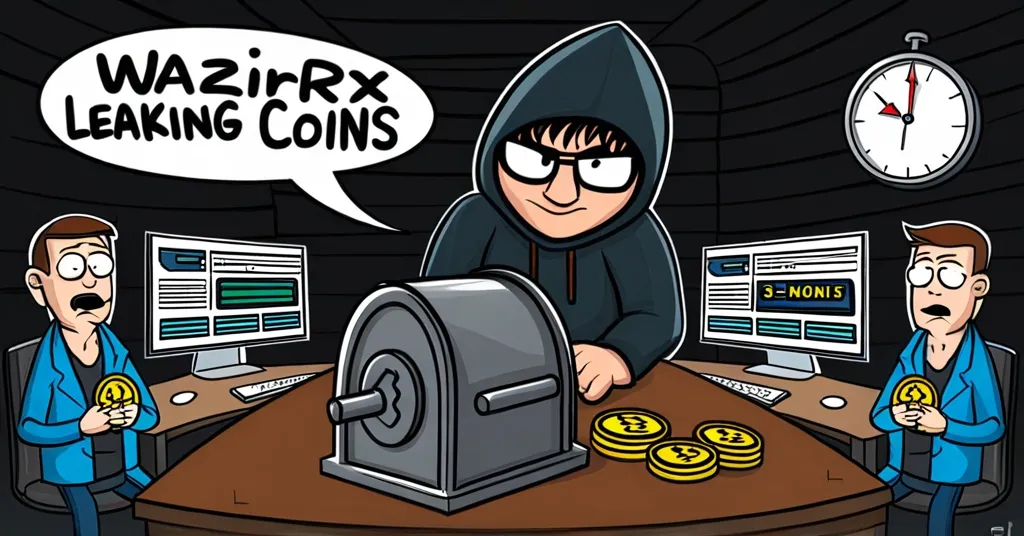WazirX Aims to Repay 80% of $234M Hack, Faces Community Doubt

WazirX’s Plan to Repay 80% of Stolen Funds Faces Community Skepticism
The Singapore High Court has approved WazirX’s plan to repay 75% to 80% of the funds lost in a $234 million hack, but the crypto community remains skeptical of the lengthy three-month voting process.
- Singapore High Court approves WazirX repayment plan
- Community skeptical of three-month voting process
- Recovery tokens issued to affected users
On July 18, 2024, WazirX was hit by a bold theft by hackers linked to North Korea, known as the Lazarus Group. They exploited a vulnerability in the system used to manage digital assets securely, resulting in a staggering loss of over $234 million in multiple crypto assets. This hack, which drained WazirX’s reserves and rocked the crypto world, led to a liquidity crisis, with stolen funds representing over 45% of the exchange’s holdings.
In response to this devastating hack, WazirX, under the leadership of CEO Nischal Shetty, has proposed a recovery plan to restore some of the lost funds. The plan, approved by the Singapore High Court on January 23, 2025, under the Company’s Act 1967, involves distributing liquid assets and issuing recovery tokens to affected users. These tokens are like digital IOUs that also give you a part of any future profits WazirX might make, as well as any recouped stolen funds. It’s an ambitious move to prevent liquidation and rebuild trust, but it’s not without its critics.
The crypto community, rallying under the banner of “Justice for WazirX users,” isn’t buying it. They’re particularly irked by the proposed three-month voting period to decide the plan’s fate. If approved, funds would be distributed within 10 business days, but the community feels the timeline is unnecessarily long. “The user voting process should not require more than three months,” states the community group, “yet the CEO is allegedly asking for more than four months to convene the voting process.” This discrepancy fuels further skepticism.
To add to the drama, WazirX has frozen $3 million in Tether (USDT) and is working hand-in-hand with authorities in the U.S., Japan, and South Korea to claw back more of the stolen loot. This move shows a commitment to recovery, but it’s the transparency and feasibility of the restructuring plan that remain under scrutiny.
Despite the court’s approval, the crypto community remains wary. While WazirX’s plan to repay a significant portion of the stolen funds is commendable, the lengthy voting process and questions about the plan’s transparency have fueled doubts. In the crypto world, where hacks are as common as bad puns, WazirX’s plan is a hopeful note, but it’s not without its critics.
The WazirX hack, executed by the notorious Lazarus Group, underscores the ongoing challenges in cryptocurrency security. While WazirX’s plan is a step in the right direction, it also highlights the inherent risks of centralized exchanges. Perhaps it’s time to consider more decentralized solutions that could prevent such incidents. Bitcoin maximalists might argue that this incident underscores the vulnerabilities of centralized exchanges and the importance of embracing Bitcoin’s decentralized ethos.
As the crypto industry continues to evolve, the balance between security and decentralization will remain a hot topic. The WazirX hack and subsequent recovery plan highlight the need for robust security measures, transparent recovery processes, and perhaps a shift towards more decentralized solutions to prevent future hacks.
Key Takeaways and Questions
- What was the amount stolen from WazirX during the hack?
Over $234 million in multiple crypto assets was stolen during the hack on July 18, 2024.
- Who was responsible for the WazirX hack?
The hack was attributed to North Korea’s state-sponsored hacking group, the Lazarus Group.
- What percentage of the stolen funds will WazirX repay?
WazirX plans to repay 75% to 80% of the stolen customer funds.
- How long will the voting process for the reorganization plan last?
The voting process is set to last three months, though the community has criticized this timeline.
- What are recovery tokens, and what do they offer to affected users?
Recovery tokens are digital credits issued to affected users, representing the amount they are owed. These tokens also provide users with a share of WazirX’s future profits and any stolen funds that may be recouped.
- What actions has WazirX taken to recover the stolen assets?
WazirX has frozen $3 million worth of Tether and is collaborating with authorities in the U.S., Japan, and South Korea to retrieve further assets.
- Why is the WazirX community skeptical of the reorganization plan?
The community is skeptical due to the lengthy three-month voting process and doubts about the transparency and feasibility of the plan, as expressed by the “Justice for WazirX users” group.



